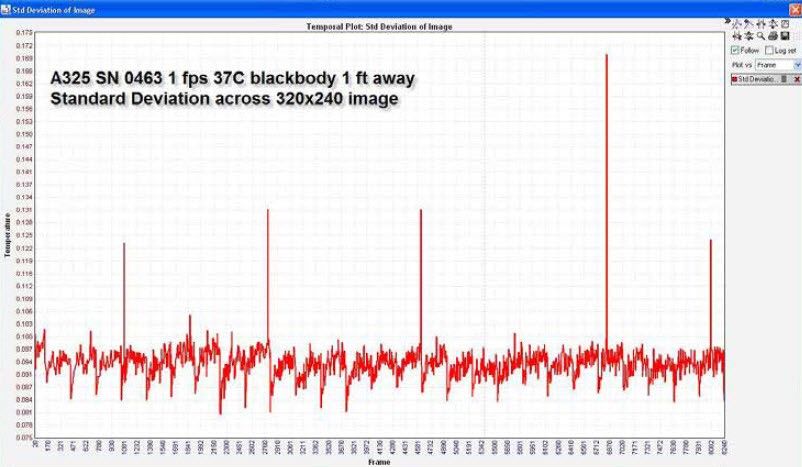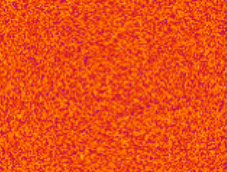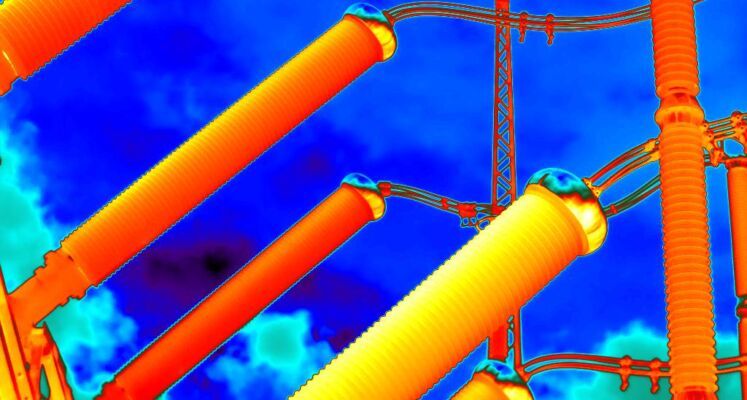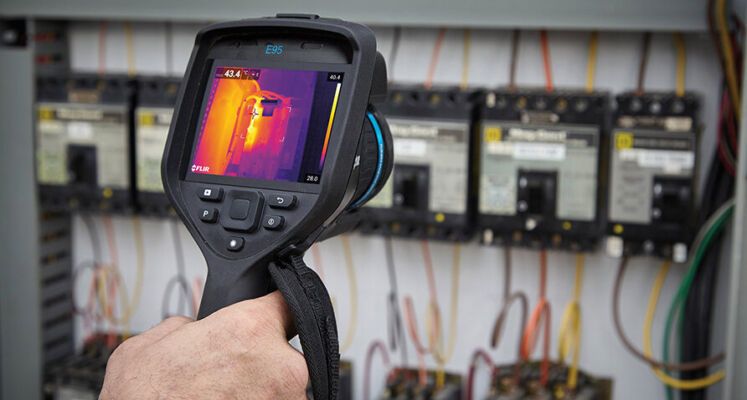The concepts of accuracy and precision are often used interchangeably. Yet they are not synonyms. They even have a completely different meaning.
The temperature curve during measurements
Before we explain the difference between accuracy and precision, let’s take a look at how a thermal camera takes measurements.
Suppose we point a thermal camera in a laboratory at a black body (or black radiator). This object absorbs all electromagnetic radiation falling on it, so reflections do not interfere with the measurement. In addition, the lab has a constant temperature of 37 °C. When the camera takes a measurement every second for two hours, we get the graph below:

Most of the data points lie between 36.8 °C and 37 °C, with peaks of 36.6 °C and 37.2 °C. There are therefore several (small) deviations from the real temperature.
What is accuracy?
Accuracy tells how well a camera can measure something. It shows the deviation between the (average) value from a series of measurements and the real value. This error margin is expressed in ±1% or 1 °C (whichever is greater).
Suppose the actual absolute value of an object is 35°C, then the thermal imager is within specifications when the temperature is displayed as follows (taking into account correct settings such as emission, reflection and transmission)
| Accuracy of thermal camera | Expected temperature |
| ±1% or 1 °C | 34°C ≤ T camera ≤ 36°C |
| ±2% or 2 °C | 33°C ≤ T camera ≤ 37°C |
| ±5% or 5 °C | 30°C ≤ T camera ≤ 40°C |
At a temperature of 170°C
| Accuracy of thermal camera | Expected temperature |
| ±1% or 1 °C | 168.3°C ≤ Tcamera ≤ 171.7°C |
| ±2% or 2 °C | 166.6°C ≤ Tcamera ≤ 173.4°C |
| ±5% or 5 °C | 161.5°C ≤ Tcamera ≤ 175.5°C |
What is precision?
Precision is the degree to which individual measurements differ from one another. The smaller the random variations (such as the peaks in the graph above), the higher the precision. High-precision thermal cameras can pick up even the smallest thermal variations.
The precision is expressed in NETD (Noise Equivalent Thermal Difference)

The NETD is the final sum of the inaccuracies that arise from influences of the detector, electronics, lens, etc.
Shooting exercise as an analogy
The difference between accuracy and precision will become immediately clear when we compare it to a shooting exercise.
You fire four bullets towards a target. The aim is to hit the bull’s-eye.
The distance between the bullets and the rose shows the accuracy. The spread of the bullets shows the precision.
Low accuracy, high precision
The example below has a low accuracy (the bullet holes are far from the rose), but a high precision (the cluster of bullet holes is close together).

High accuracy, low precision
Below we see a different story, namely high accuracy (bullet holes close to the bull’s eye), but low precision (large distance between bullet holes).



